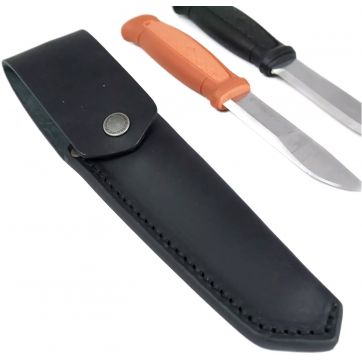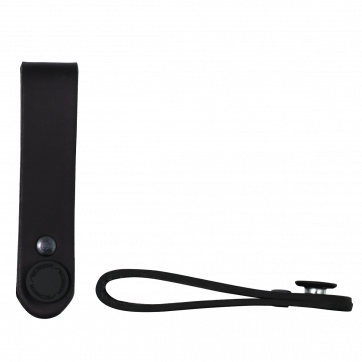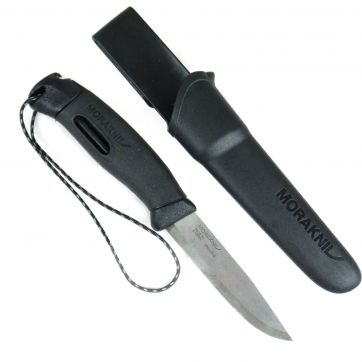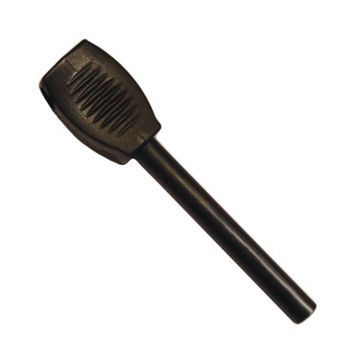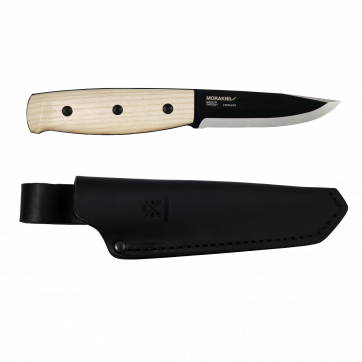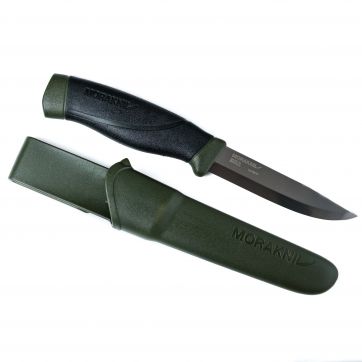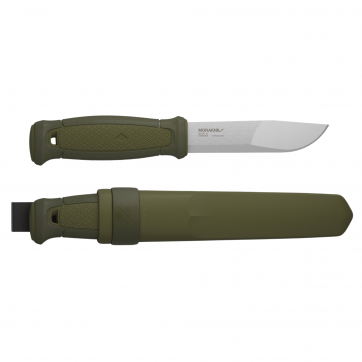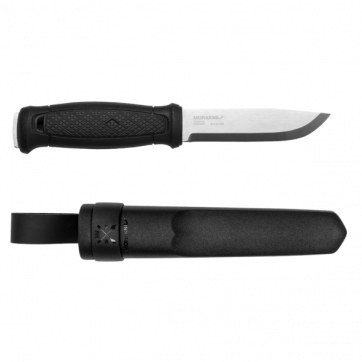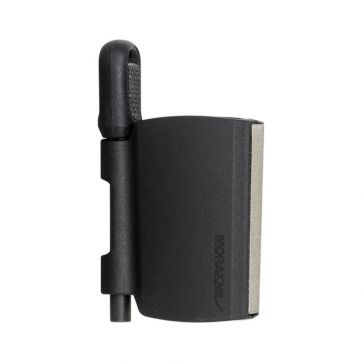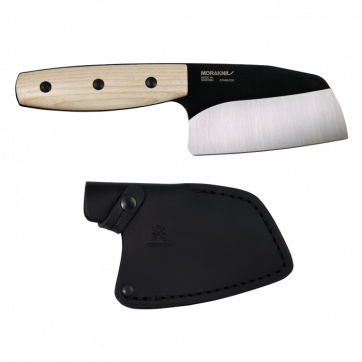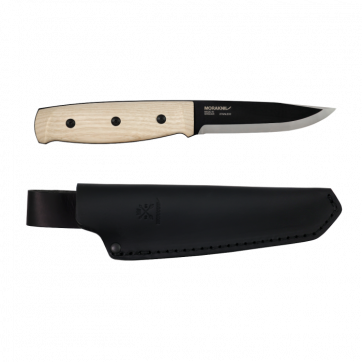Here at Woodsmith we are best known as suppliers of some of the worlds finest carving knives from some highly respected makers. But as enthusiasts of knives as working tools in a wide range of environments and circumstances we stock bushcraft and outdoor knives from renowned Swedish brand Morakniv.
There are times when a single knife must be capable of doing many different jobs. A bushcraft knife is a good example of a knife that is specked to be able to perform a range of duties, albeit some better than others. The consensus is that most bushcraft knives should have a strong tang that runs the full length of the handle (a full tang) and a robust blade of about 3.2mm in thickness. It should be able to withstand the toughest of tasks, including battoning the back of the blade to split wood. A ground spine is a necessary feature to make it compatible with a fire starter.
Most users of bushcraft knives would probably, from time to time, also like to be able to do a little carving, and with a scandi-grind (flat bevels), a limited amount of carving should be possible. However, there are features of a bushcraft knife that make it less than ideal for carving. Firstly, the steep bevels 30-35 degrees (combined) are for robustness not carving, a carving knife needs to have finer bevels of about 25 degrees (combined). Most typical carving blades are quite slim and not very deep, with a blade thickness of about 2.5mm and a depth of about 16-17mm at the handle, the belly is normally long to permit tight turns.
A bushcraft knife inevitably has to work in wet outdoor conditions so nearly always has a blade made from stainless steel to prevent rust, whereas a carving knife will nearly always have a blade made from high carbon steel which will take and hold a much finer edge.
Many knives compromise on features, so if you need one knife to do several jobs it's worth doing some research.
Get in touch if you need help.

